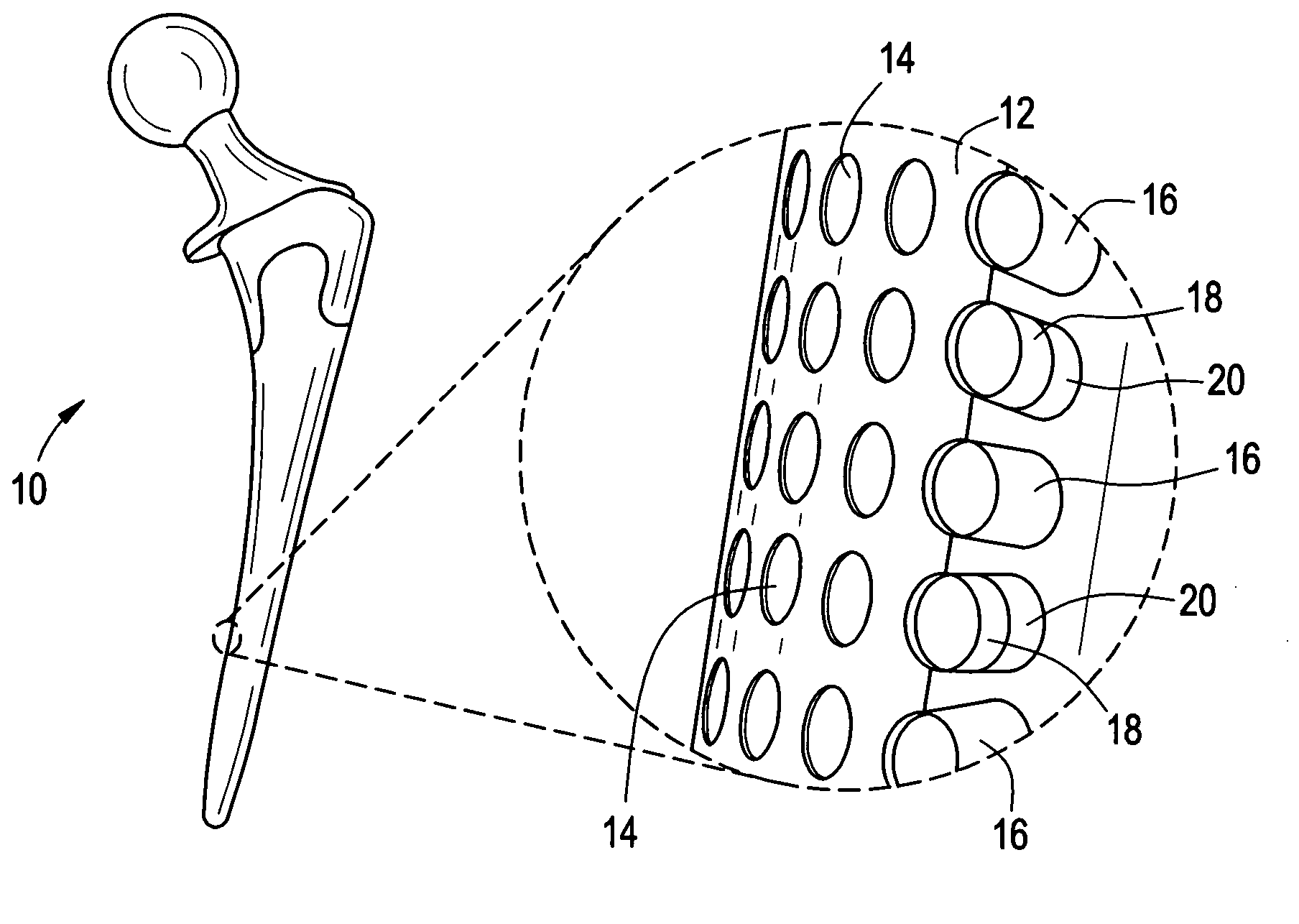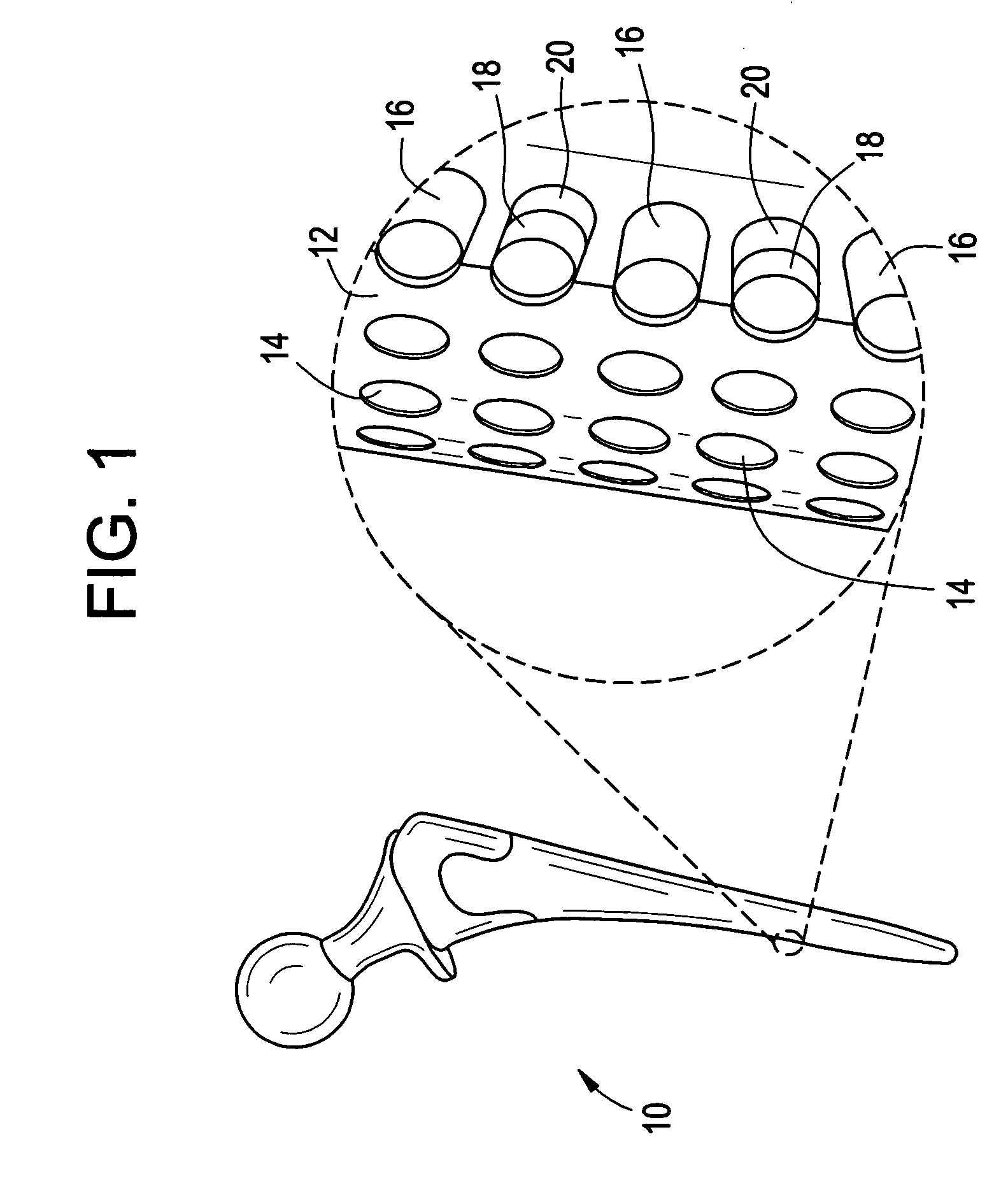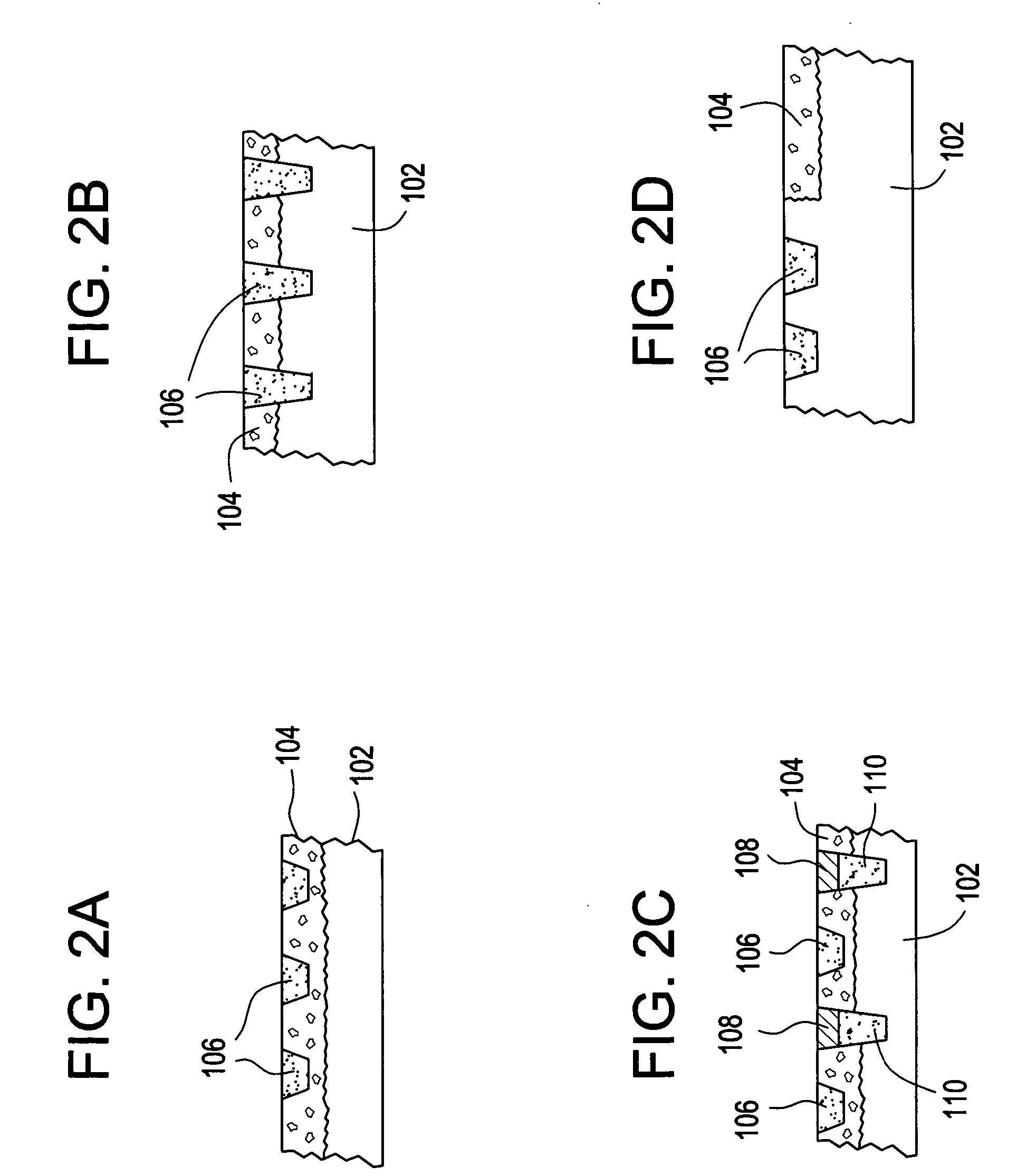Orthopedic and dental implant devices providing controlled drug delivery
a technology of oral and dental implants and controlled drugs, which is applied in the direction of shoulder joints, surgical staples, therapy, etc., can solve the problems of loss of bone tissue at the interface with the prosthetic device, the loosening of the joint/prosthetic, and the end of the prosthetic implan
- Summary
- Abstract
- Description
- Claims
- Application Information
AI Technical Summary
Benefits of technology
Problems solved by technology
Method used
Image
Examples
Embodiment Construction
[0032] Implantable orthopedic, spinal, and dental devices, in particular prosthetic joint and prosthetic disc devices, have been developed to provide improved controlled release of drug at the site of implantation. The released therapeutic or prophylactic agents are primarily intended for local or regional effect, but may in certain embodiments be intended for systemic delivery.
[0033] In one aspect, the device includes an array of discrete reservoirs (at least two and more preferably hundreds), particularly microreservoirs, that are provided across one or more outer surface areas of the device body. These reservoirs contain a release system comprising at least one therapeutic or prophylactic agent, and the release system and / or reservoir caps control the release kinetics (time and rate of release of the agent) in vivo following implantation. By containing the drug and controlled release formulation within discrete reservoirs built into (at least a portion of) the structure of the d...
PUM
| Property | Measurement | Unit |
|---|---|---|
| thickness | aaaaa | aaaaa |
| thickness | aaaaa | aaaaa |
| volume | aaaaa | aaaaa |
Abstract
Description
Claims
Application Information
 Login to View More
Login to View More - R&D
- Intellectual Property
- Life Sciences
- Materials
- Tech Scout
- Unparalleled Data Quality
- Higher Quality Content
- 60% Fewer Hallucinations
Browse by: Latest US Patents, China's latest patents, Technical Efficacy Thesaurus, Application Domain, Technology Topic, Popular Technical Reports.
© 2025 PatSnap. All rights reserved.Legal|Privacy policy|Modern Slavery Act Transparency Statement|Sitemap|About US| Contact US: help@patsnap.com



